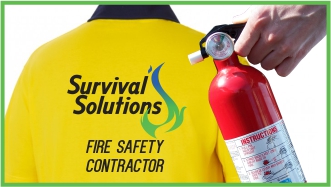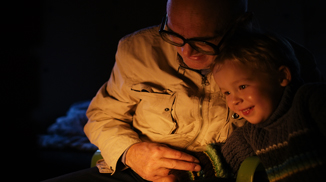FIRE SAFETY INFO, TIPS & NEWS
Survival Solutions are Accredited Fire Safety Practitioners servicing Sydney, Newcastle, Hunter Valley and the Central Coast for all essential fire services. Inspection, maintenance, product supply and install as well as Annual Fire Safety Statements.
Phone our friendly, experienced team on 1300 040 362 for assessment or any questions.
- RC HENDERSON HAT FACTORY
- BACKFLOW PREVENTION
- AFSS RENEWAL
- FIRE SAFETY DOORS
- INSURANCE AND FIRE SAFETY COMPLIANCE
- FIRE SAFETY REQUIREMENTS FOR STRATA PROPERTIES
- BE SAFE THIS CHRISTMAS
- FIRE EVACUATION DIAGRAMS
- COVID-19: AFSS BUILDING CERTIFICATION
- FIRE SAFETY REFORMS FOR LANDLORDS
- ANNUAL FIRE SAFETY STATEMENTS 2020
- CERTIFIED SERVICE PROVIDER
- PHOTOELECTRIC SMOKE ALARMS
- THE PASS METHOD
- EQUIPMENT MAINTENANCE & CERTIFICATION
- FIRE DOOR DAMAGE
- STRATA FIRE SAFETY
- ELECTRICAL SAFETY
- UPSS
- CHEMICAL USE & STORAGE
- GENERAL HOME FIRE SAFETY TIPS
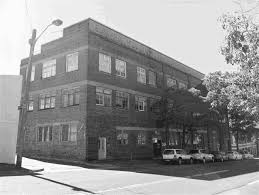
Late yesterday afternoon, the beautiful heritage-listed RC Henderson Hat Factory burned to the ground as the walls started to collapse around other modern residential buildings. Although very sad and terrifying to the nearby public and adjoining residences, the fantastic men and women of Fire and Rescue NSW controlled the risk for this and surrounding buildings. Although there was some minor damage to adjoining buildings from the heat, the installed and maintained fire system did their job, with the fire-rated walls, windows and wall-wetting sprinklers working to limit the impact on the modern residential towers that adjoined the source fire. All residents from adjoining residential towers were safely evacuated, highlighting the importance of good emergency planning and practice.
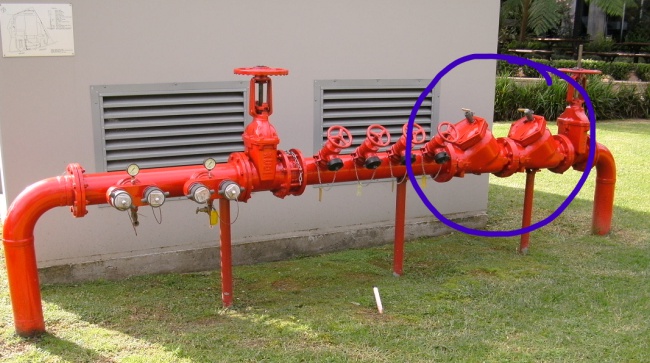
What is backflow prevention?
Domestic water enters a private property from the public supply, i.e. from the street main to the private supply. There is a requirement that this water supply is prevented from re-entering the public water supply. This is achieved by using a backflow device on the water supply line, which allows water to enter the domestic supply but prevents it from returning to the public supply. The law requires these devices to be tested annually with special equipment by licensed backflow plumbers and the results reported to the council. Survival Solutions has added this annual service to our business and it is available now if required by our existing and new clients. You can call today to find out more on 1300 040 362
When it is time to renew your annual fire safety statements, or AFSS as they are known, it can bring a whole lot of anxiety.
Many building owners, particularly those with self-managed super funds, don’t have much spare cash to carry out unnecessary repairs, and the thought of an annual service on their buildings comes with stress.
At Survival Solutions, we have been working with such investors for over thirty years, and we understand this pain. With an in-house team of support from administrators, technicians and tradespeople, you can be sure we will take care of your business as if it were ours.
We can certify and service all types of fire extinguishers, fire hose reels, exit and emergency lights, fire doors, smoke alarms and hydrant systems, just to name a few. It doesn’t matter the size of your building or complexity; we are here to help make this journey easier for you, so give us a call on 1300 040 362
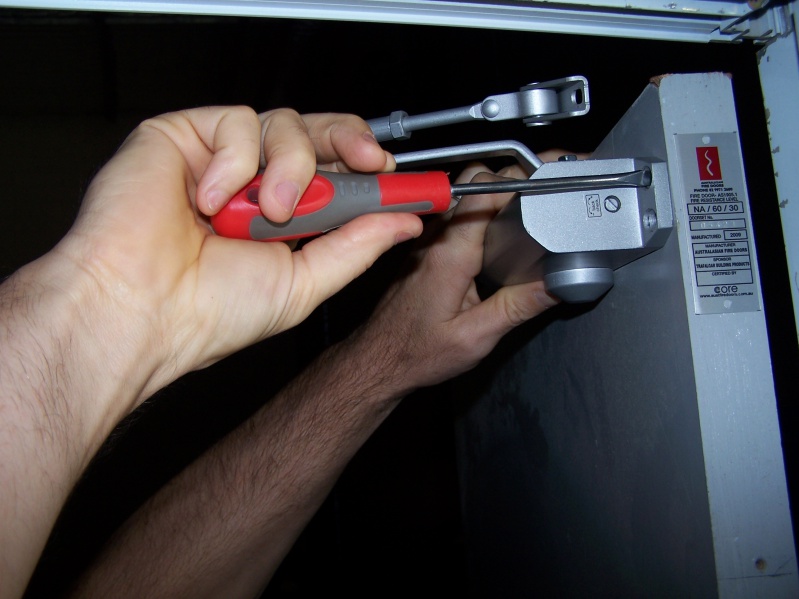 Why is my fire safety door broken?
Why is my fire safety door broken?
As a fire service business, Survival Solutions regularly checks the operational status of fire doors and often find them non-compliant.
Fire doors are designed to be installed in a firewall where the fire-rated integrity of the wall has been interrupted by an opening that allows the passage of people and goods through that wall, unlike an exit door, which may not require any fire-rating but allows passage of people or goods.
The obvious question by customers is why was the fire-door OK when it was installed, and last time it was checked, and now it's failed compliance.
Fire-doors are installed for many different reasons, but the three most common ones are fire separation of different classes within the same building, for example:
- • A residential class 2 (sole occupancy units and common area), being separated from a residential class 7 (carpark).
- • Fire separation of an individual building where two smaller compartments will negate the need for a sprinkler system.
- • Where there is an external wall that is too close to the adjoining boundary, regardless if there is a dwelling there.
Well, doors can expand and contract with variations in weather and environmental pressure, which over time can cause doors to change shape, exceeding gap tolerance, which is three millimetres from the frame at the sides and top and ten milimetres from the floor. External doors can also be exposed to rain and water getting into the panelling, causing the timber to rot and separate from the fire door material.
And the other thing is that people sometimes inadvertently install non-compliant door hardware, such as deadlock and peepholes, that impact the fire-rated integrity of the door or inhibit it from closing automatically in some circumstances. Most of these issues are minor fixes but, at times, require a complete door replacement.
If you have a need for any door repairs or replacement, Survival Solutions has a team of qualified and experienced fire door carpenters, ready to assist you or your customers.
What is the difference between Insurance and Fire protection service providers?
Fire protection services focus on building fire safety assets that are in place to protect human lives by way of fire suppression, detection or containment.
The fire safety industry relies on the guidance of the Building Code of Australia and relevant Australian standards referenced in the BCA for type, quantity, location and purpose of equipment and design.
All of these measures are regulated in NSW under the NSW Environmental Planning and Assessment Regulation 2000.
It seems in some cases; insurance providers are mainly concerned with the protection of assets and buildings.
As a result, many building owners are being asked to certify fire safety measures by way of a statement provided by the fire service provider for measures (equipment) that is not required by law.
This is creating issues for building owners and fire service providers as the additional requested measures are impractical, expensive and prone to many other problems.
They are not required in certain buildings and situations under the law.
Unfortunately, the insurance industry is weighing up its risk against revenue. In many cases, the numbers don't stack up, and they may use this strategy to force the owner to go elsewhere.
If this is happening to you and you need help to resolve it, Survival Solutions would be an excellent place to start. Call now so we can help you resolve this matter.
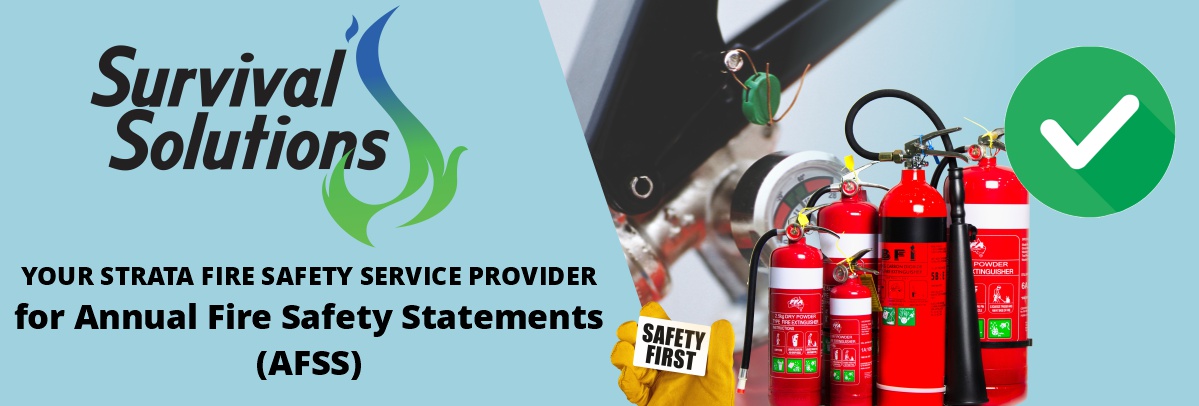
August 2022 has seen sweeping reforms come into play for the safety of residents, visitors and workers in NSW Strata Schemes. Annual Strata reporting through the NSW Department of Fair Trading is now required.
Annual Fire Safety Statements (AFSS)
Included in this reporting is the date the annual fire safety statement (AFSS) was issued.
What are the Fire Safety Rules?
Some Strata Schemes must get a fire safety statement each year from a Fire Protection Association Australia (FPAA) – accredited practitioner. If one is required, the owners corporation should report on the fire safety statement each year.
Does your Strata Scheme Require an Annual Fire Safety Statement?
All strata building constructed after 1988 will need to issue an annual fire safety statement (AFSS), based on the fire safety schedule. An annual fire safety statement (AFSS) can only be issued when there is a fire safety schedule, which identifies the fire safety measures (fire safety equipment) and standard of performance (BCA and Australian Installation Standards) that the building complies with. The following strata buildings generally DO NOT require an annual fire safety statement:
- Freestanding or detached townhouses or houses (class 1a buildings)
- A single group of townhouses or row of houses or villas (single or double story) (class 1a buildings)
- Structures that are not lived in such as garages, carports or swimming pools (class 10 building)
All class 1b, 2, 3, 4, 5 ,6, 7, 8 and 9 building approved for construction after 1988 will have a fire safety schedule and require an annual fire safety statement (AFSS). When a strata scheme has a building with multiple units on multiple floors or one residential unit has any portion above another, it is a class 2 and requires an annual fire safety statement (AFSS).
For further clarification when you need an annual fire safety statement (AFSS) please contact one of Survival Solutions certification experts for more information.

Fire evacuation diagrams or plans as they are often called a key component to an emergency management strategy with a building or business.
Among many things, they help staff and visitors familiarise themselves with fire safety equipment location, paths of travel to exist and exit from a building to a designated assembly area.
Evacuation diagrams can be quite simple in their design but must have key elements included on the such as:
- YOU ARE HERE location
- Diagram rotations, oriented to be accurately installed on a north, south, east or west wall
- Designated exit doors
- Paths of egress from the building
- EWIS WIP phones, manual and emergency call points
- Fire hose reels, hydrants, fire extinguishers and fire blankets as applicable
- Automatic smoke detection panels
- Appropriate legend
- Evacuation diagram validity date
- Emergency assembly points
- First Aid Kits
- Gas Supply Valves
- Electrical Switch rooms and boards
- RACE or site-specific evacuation instructions
It is a requirement for all businesses to ensure at least one member of staff is trained in fire equipment use and evacuation, which also means evacuation diagrams are also required.
If you have evacuation diagrams that are more than five years old, they must be reviewed for any building modification and procedural changes.
If you would like to discuss your evacuation diagrams status or needs, please send an enquiry or call 1300 040 362
We have received several calls from building owners and strata managers asking for advice with regards to building certification during COVID–19 crisis. There does not seem to be much in the way of guidance from the government, and so a common-sense approach must be taken. As most would understand, it is quite tricky at the moment to conduct a complete assessment for annual building certification.
Survival Solution has adopted the following position until further guidance is received and suggest others do the same:
- Where assets can safely be inspected and assessed as compliant, they will be certified by the CFPS.
- Where Assets such as smoke alarms or detectors, fire doors, lightweight construction and fire dampers are located inside a sole occupancy unit (SOU), will be noted as not compliant due to COVID 19 restriction.
- Annual Fire Safety Statement will still need to be submitted on or before they expire to ensure buildings continue the legal occupation.
- We will continue to provide AFSS with these notes regarding non inspected measures.
Both our Operational and Administration teams are considered a vital service with regards to building and life safety and we continue to trade throughout this pandemic.
Survival Solutions Fire Protection is open and available 24/7 for all your fire safety, electrical or plumbing needs. Our service technicians and tradespeople are ready to assist you as required. If you find yourself in a position where you need any equipment inspected or require an urgent service, particularly with detection, smoke alarms, hydrant or sprinkler systems, we are available to assist.
Our team is also available to assist in any way we can, whether it is cleaning or delivery services, we have the resources and system to help.
OUR CORONAVIRUS PRECAUTIONS – FOR YOUR HEALTH AND SAFETY AS WELL AS OURS
The precautions we have put in place to protect our staff and your business from COVID-19 are as follows:
- As an essential service provider that needs to support commercial and residential customers and members of the public, we are taking the risk of coronavirus very seriously.
- Early in the onset of this crisis, we implemented our risk management policy for COVID-19 and these protocols have now been in effect for the past three weeks.
When attending your property:
- We will provide you with adequate notice, in advance, that we are attending your site.
- We will not approach or communicate with anyone onsite, following initial introduction.
- We will only service equipment with latex gloves.
- All staff will work with a mask on.
- Clean work services before and after inspection or repair where possible.
We ask that you:
- Refrain from approaching or communicating with our staff.
- Cancel any services or repairs where your premises have been infected.
- Pay for services provided as soon as possible to help us keep our staff available for you.
- Do not attempt to visit our Tuggerah office for any reason.
Jeff Terry - MD - COVID-19 from Beau Baker on Vimeo.
The perfect storm in NSW
- FIRE
- FLOOD
- FLU
- FIRE SAFETY REFORMS
What do the new NSW Fire Safety Reforms mean to you if you are a Landlord of Residential Property or the Owner of a Commercial Building.
During the past six months, we have witnessed the NSW economy and industry take a battering from the three P’s, and we about to experience another one. On the 23rd March 2020, we will see significant changes come into effect regarding fire safety in new residential rental tenancies. While the 6th April 2020, sees the most significant reforms to be introduced by the NSW for fire safety building Certification.
New Smoke Alarm Obligations
From 23rd March, landlords and property managers will need to ensure smoke alarms installed in rental properties are in working order. Failure to comply will result in hefty penalties.To ensure smoke alarms are in working order, the landlord or property manager must:
- Carry out Annual Checks of smoke alarms.
- Replace a removable battery in all smoke alarms in the period specified by the smoke alarm manufacturer (for a removable lithium battery), or otherwise annually.
- Repair or replace a smoke alarm that is not working within two days of becoming aware that it is not working.
- Replace a smoke alarm with a new smoke alarm within ten years from the manufactured date, or earlier if specified by the smoke alarm manufacturer.
- Give at least two business days’ notice to inspect or assess the need for smoke alarm repair or replacement, and at least 1-hour notice to carry out repair or replacement of a smoke alarm.
Fire Safety Reforms Enforceable from April 6, 2020
Kevin Anderson, the NSW Minister for better regulations, has advised industry practitioners that from April 6 2020, only individuals accredited as Accredited Practitioner Fire Safety under the Fire Protection Association Australia (FPA Australia) Fire Protection Accreditation Scheme (FPAS) will be authorised to endorse plans, specifications of fire safety systems and endorse fire safety measures for annual certification.
The Functions required to be undertaken by Accredited Practitioner Fire Safety include:- Annual assessment of essential fire safety measures, and the annual inspection of fire exits and paths of travel to fire exits.
- Endorsement of plans and specification for the installation or modification of hose reels, hydrant, sprinkler systems, fire detection and alarm systems as complying with the Building Code of Australia (BCA) before the instalment, as part of new building works for which a construction certificate or complying development certificate has been issued.
Jeff Terry, Managing Director of Survival Solutions, has become accredited in a number of essential fire safety systems and can provide Certification for Annual Fire Safety Statements and new building works. Please feel free to contact us for further assistance 1300 040 362
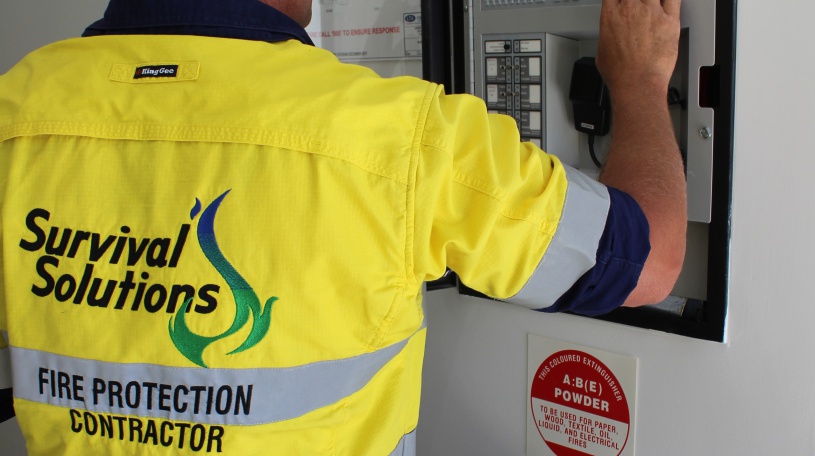
Each year a building owner or their appointed representative is responsible for the submission of their building’s Annual Fire Safety Statement (AFSS), as required by council. Thus, a "Accredited Practitioner Fire Safety" such as Survival Solutions has assessed all essential fire safety measures listed on the Fire Safety Schedule (FSS) and conclude that the equipment is installed to the effect that:
- Each Essential Fire Safety Measure specified in the AFSS has been assessed by a Accredited Practitioner Fire Safety.
- At the time of the assessment the measures were found to be capable of performing at no less than the standard specified in the Fire Safety Schedule
- Or in the absence of a Fire Safety Schedule, the measures must perform to a standard no less than that to which the measure was originally designed and implemented
- Examples of essential fire safety measures could be:
- Fire Extinguishers, Exit Lighting, Emergency Lighting or Fire Hose Reels in accordance with relevant Australian Standards (AS) and Building Code of Australia (BCA). A Accredited Practitioner Fire Safety signing off on Essential Fire Safety Measures must have/be:
- A member of the Fire Protection Association Australia (FPAA).
- Hold a Fire Safety Assessment (FSA) or Fire Systems Design (FSD) accreditation.
- Completed the correct modules and passed the FPAA examination required for all listed measures.
- Inspected all listed measures originally implemented in the buildings design.
LET US BE YOUR SOLUTION
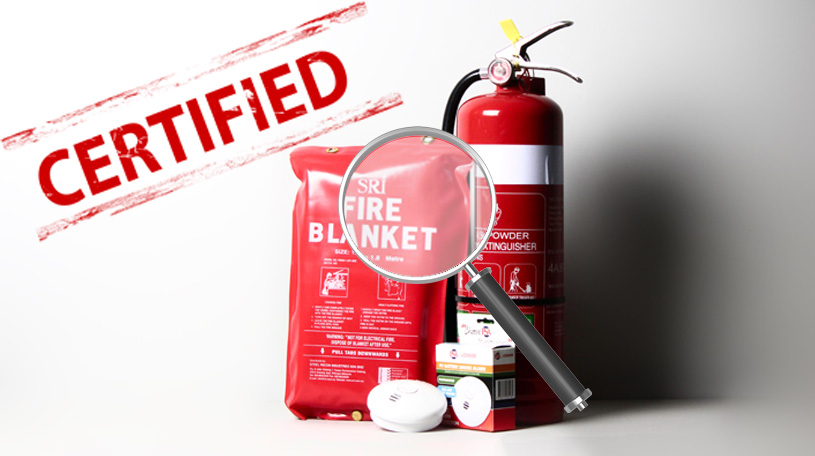
With the onset of fire industry regulation in NSW commencing in July 2020, your current or proposed fire protection service provider will need to be certified.
From 21st July 2020 the NSW government will require individuals working in the fire industry to be certified by the Fire Protection Association of Australia or FPAA to issue annual fire safety statements or fire certificates as they often called.
There are up to 32 separate measures that may require certification and Accredited Practitioner Fire Safety will need to undertake training, assessment and qualification before they can certify these measures.
This process has been demanding to say the least and many small to medium service provider may not obtain the required approvals to allow them to certify your buildings from 21st July 2020.
Survival Solutions has been in business for 22 years and has always employed competent individuals, many of whom are well on their way to obtaining certification.
Survival Solutions services many areas including, the Central Coast, Newcastle, The Hunter, Lake Macquarie and Port Stephens.
If you are concerned about your position come July 2020, don’t wait, call Survival Solutions now, to ensure you are ahead of the very significant changes.
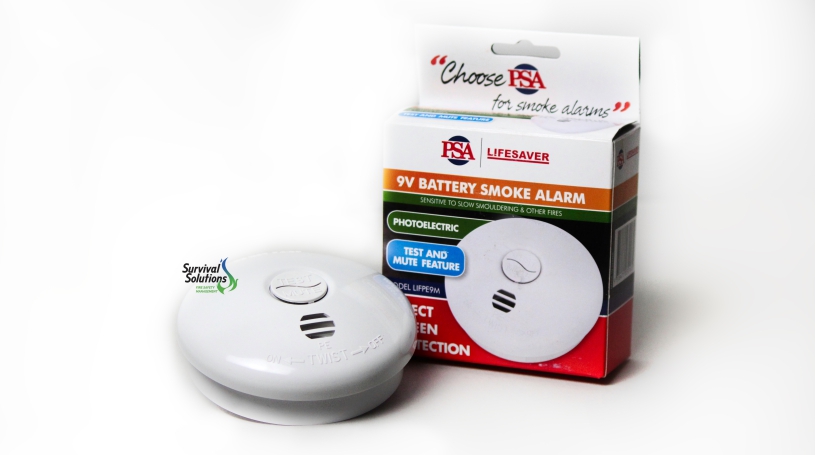
Most homes in Australia are equipped with a serviceable Smoke Alarm. These fall into two categories, Photoelectric and Ionisation Smoke Alarms.
There is a significant difference between how Photoelectric and Ionisation Smoke Alarms function.
Both of these Smoke Alarms are legally utilised in homes across Australia as they are manufactured and meet the requirements of Australian Standards.
Ionisation Smoke Alarms were once effective when building materials and furnishings were manufactured primarily from timber.
Modern homes now contain mostly manufactured synthetic materials and the onset of a smouldering fire which produces hazardous smoke can create an environment with highly toxic properties.
However, Photoelectric smoke alarms are far more beneficial to safety in the home as they can detect a smouldering fire long before flames are produced, this provides occupants with the chance to detect and investigate a fire in its early stages and allowing significant time for evacuation if required.
Do you have any questions about the supply and installation or testing of Photoelectric Smoke Alarms in a residential building?
Let us be your Solution. Contact Survival Solutions today via our Facebook page, or call us on 4351 0210 for more information.
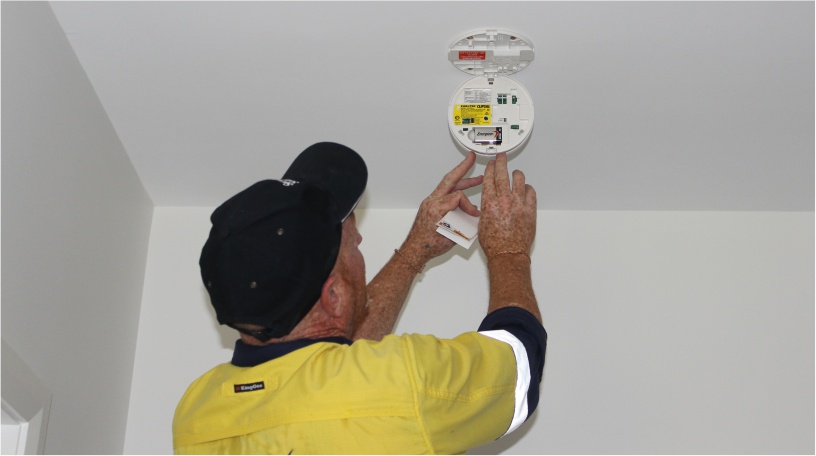
We often get asked to assess residential strata complexes and units for compliance of smoke alarms.
To the untrained person, or even fire service technician the answer to this question may seem complex, but in reality it is not.
In NSW there are three areas that provide information regarding the requirement of smoke alarms in class 1A, class 2 and class 4 part residential buildings. In order of priority:
- NSW Environmental Planning and Assessment Regulations 2000, Part 9, Division 7A, Clause 168B
- National Construction Code E2.2A Clause 3
- AS3786-2014
In the above classes the NSW EPA regs 2000 confirm that the power source for a smoke alarm can be internal (9 volt battery or sealed 10 year lithium) or external 240 volt in accordance with clause 4.9 of AS3786 - 2014 or clause 2.1 of AS3786 – 1993.
The only time a 9 volt or lithium battery smoke alarm would not comply is if the smoke alarms needed to be interlinked when more than one was required, such as two separate levels. In such instances a wireless battery operated or 240 volt would be required.
For further assistance regarding smoke alarm installation, service or replacement contact Survival Solutions on
1300 040 362
The PASS Method
When a building is approved for construction, the owner of the proposed building, architect and fire safety consultant and at times engineers, will establish the use and size of the proposed building.
It is this use and size that determines what fire safety measures are to be installed. These measures form the fire safety schedule which establishes the required fire safety measures, such as extinguisher, exit lights, fire doors etc. that are required and the minimum standard of performance they must meet.
Read our full report on the compliance requirements and importance of fire safety equipment documentation here.

As a fire service business, Survival Solutions regularly check the operational status of fire doors and find them non-compliant. The obvious question by customers is “Why was it fine when it was installed and the last time it was checked and now its non-compliant?”
Fire doors are designed to be installed in a fire wall where the fire rated integrity of the wall has been interrupted by an opening that allows the passage of people and goods through that wall.
Fire Doors are installed for many different reasons:
- 1. An example would be fire separation of different classes within the same building, such as a residential class 2 (sole occupancy units and common area), being separated from a residential class 7 (carpark).
- 2. Or fire separation of an individual building where two smaller compartments will negate the need for a sprinkler system.
- 3. And then this situation, where there is an external wall with an opening that is too close to adjoining boundary.
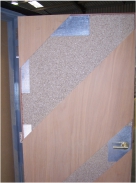
Now the question is “Why has my fire door failed?”
Doors can expand and contract with variation in weather and environmental pressure which over time can cause doors to change shape, exceeding gap tolerance, which is 3mm from the frame at the sides and top and 10mm from the floor. External Doors can also be exposed to rain and water getting into the panelling, causing the timber to rot and separate from the fire door material. Others reasons are that people sometimes inadvertently install unproved door hardware that impacts on the function of the door or inhibits it from closing automatically in some circumstances. Most of these issues are minor fixes but at times requires a complete door replacement.
If you have a need for any door repairs or replacement, Survival Solutions has a team of qualified and experienced fire door carpenters ready and willing to assist you or your customers.

If you own a unit in a strata complex, you are probably scratching your head trying to work out how to come up with the quarterly strata fees, let alone any additional expenses such as fire safety repairs.
As an owner of a strata unit I understand your frustration, especially when it comes to the uncertainty around fire safety. With over 25 years fire industry experience, of which 20 have been as the owner of Survival Solutions, I have seen plenty of so called reliable and trustworthy experts come and go. Many of the providers from the past and some still present today, simply don’t understand the complexity associated with building compliance and certification, causing the trust of reputable and experienced businesses to be regularly questioned.
At Survival Solutions, we do have the experience and expertise to provide you with a level of certainty when it comes to fire safety management, through our team of experienced and qualified Certified Fire Safety Practitioners (CFSP). If you have doubts about the service you are receiving and think you deserve better, than contact Survival Solutions and let the new and enjoyable journey begin.
Call us on 1300 040 362
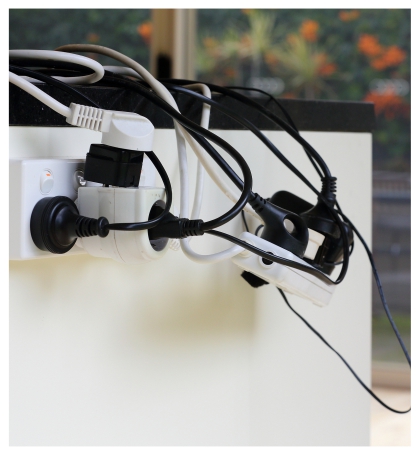
Be safe around the home
2016 saw 16 Electrical based fatalities in Australia, which is 16 too many but less than in previous years. We list the main causes of electrical hazards and fire in and around the home. Electricity cannot be seen or heard and is therefore a silent killer. READ MORE
We all know what it is like to lose power at the worst times, when it’s hot, cold or during a storm. But have you ever thought what do they do when medical supplies must be kept at a given temperature. There are some simple tips that work well for short term power loss such as:
- • Have ice bricks available wrapped in bubble wrap at the ready
- • Place as sign on the fridge door warning to keep closed
- • Tape the door closed to prevent accidental opening
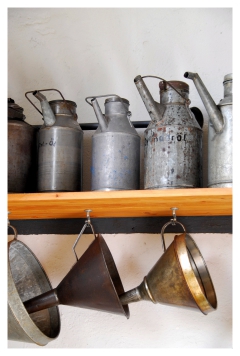
Is your home and shed safe from hazards?
Chemical found around the home can create a lethal cocktail of hazards or everyone, including children, adults and pets. Chemicals are usually stored in garages and workshops and can include: solvents such as turps, kerosene, methylated spirits, paint thinners, swimming pool chemicals, pesticides, herbicides, fertilizers, LPG cylinders, petrol and other fuels.
We often don’t apply the same WHS rules around the home that we would at work and as a result serious incidents and accident can occur. Estimates put the number
of children under 5 that are admitted to hospital for household poisoning at 4000 per year, with as many
as 5 to 10 of these children dying as a result.
Chemicals and hazardous materials are often stored in the wrong place and within reach of children.
READ MORE

Year after year many thousands of adults and children perish in house fires, with most dying from inhaling toxic smoke and deadly fumes. Sadly, most household fires are accidental and preventable.
In most cases where people have had house fires they often say “I never thought that would happen to me”. With complacency being a major contributor to house fires. The sad fact is that when it comes to safety around our homes we seem to think differently to the work place, perhaps it is because safety at home is not policed like safety at work, or that we don’t seem to identify and mitigate risk like we would at work.
READ MORE
Contact Survival Solutions for information on all fire safety procedures on
1300 040 362
ARTICLE ARCHIVES

